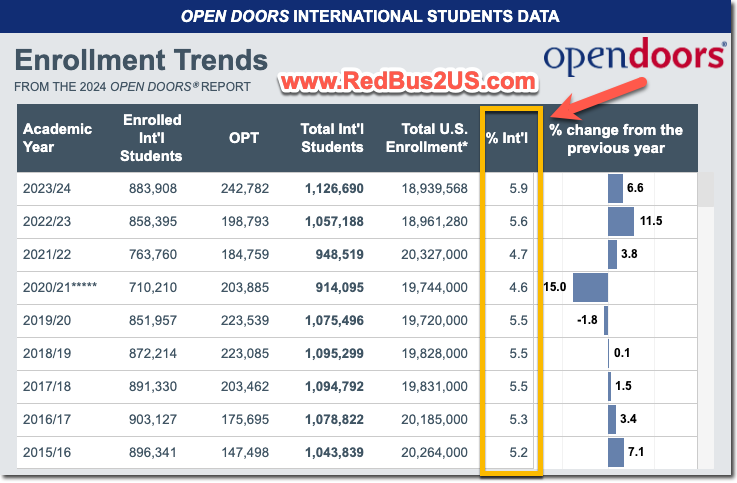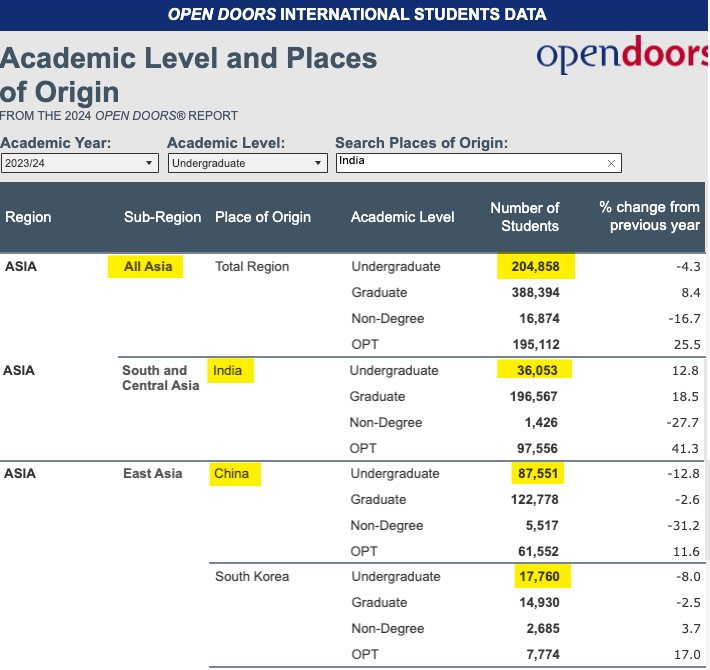970x125
The Trump Administration sent a memo to some of the U.S. universities asking them to change some of their admissions practices and how they operate, including putting a cap on the total international students at a university.
In this article, we will review the key points from the memo, who it impacts, and how it impacts the international students, and what kind of effect it can have on future international students. Also, you can read the actual copy of the memo in the last section.
Summary of Trump’s Memo to US Universities
On October 1st, 2025, the Trump Administration sent a memo to the following nine US Universities asking them to implement a framework outlined in a document titled “COMPACT FOR ACADEMIC EXCELLENCE IN HIGHER EDUCATION” that focused on their operating principles.
- Massachusetts Institute of Technology,
- The University of Pennsylvania
- Brown University
- Vanderbilt University
- The University of Southern California
- Dartmouth College
- The University of Texas at Austin
- The University of Arizona
- The University of Virginia
The primary request from the Trump Administration is that, if universities implement and follow the operating principles outlined in the memo, they will be given priority or preference in receiving federal funding.
The memo is a 10-point document. Let’s examine each of them individually, listing key ideas from each.
1. Admissions should be based on Merit Only
- Universities should make their admission decisions mainly based on merit and not consider anything such as race, sex, nationality, ethnicity, religious beliefs, gender identity or sexual orientation.
- Universities should make admission decisions objectively based on the admission guidelines published on their website. They shall require all undergraduate applicants to take standardized tests, such as the SAT, ACT, or CLT, for admission purposes. For music, art, and other special programs, they may use other program-specific accomplishments for admission.
- Universities should publicly report the admission data by race, sex, and national origin.
2. Ideas Exchange, Protect Campuses, Rules
- Universities should provide an environment for the exchange of diverse viewpoints, including conservative ideas, and cannot have a single ideology dominate them.
- They must protect academic freedom in a manner that prevents harassment, discrimination, or other unacceptable behaviors by members of the university community.
- Universities must put in place policies to prevent violence or support any terrorist organizations’ ideologies.
3. Non-discriminatory Hiring Practices for Staff
- Universities should hire purely based on merit and should not give any preferences based on race, sex, nationality, disability, ethnicity, or religion.
4. Neutrality across University Administration
- Universities should maintain neutrality across all areas in administration and cannot take any political stance as an institution.
- The staff and faculty can comment as individuals, but cannot speak on behalf of the university.
5. Students’ Learning & Grading
- Universities must maintain the integrity of their grading system and cannot inflate or deflate grades. It should reflect students’ actual achievements.
- They must publish the grading distribution data publicly with historical metrics.
6. Equality of Students
- All students must be treated as individuals and not based on their race or other characteristics. No favors or disfavors based on their race, nationality, religion, etc.
- Only two genders: “Male”, “Female”, or “Man”, “Woman”, based on reproductive/biological function. Only single sex spaces for locker rooms, sports, and bathrooms.
7. Financial Responsibility, Freeze Tuition Fee
- Universities should reduce tuition costs by eliminating unnecessary administrative costs and programs.
- Commit to freezing the tuition fee for American Students for the next five years.
- Publish the average earnings of graduates in each program.
- Refund fees for undergrad students who drop out in the first academic term.
- Universities with endowments of over $2 million per student should not charge for tuition for hard science programs.
- Commit to accepting full transfer credits from Joint Service Transcript of military service members
8. International Students Cap at 15%, Foreign Funding
- Of the total undergraduate students in a University, the International Students can be a maximum of 15%.
- Of the total international students allowed(15%), a maximum of 5% is allowed per country. Essentially, the per-country cap or limit is 5%.
- Universities must comply with anti-money laundering laws and gift disclosure laws.
- International students should be admitted based on merit rather than financial benefits.
- They must screen out students who demonstrate hostility to the US, its allies, or its values.
- Provide American civics instruction to all international students.
- Must share all information about foreign students, if requested by DHS or the Department of State.
9. Exceptions to the Conditions
- Any Religious institutions or Single-sex institutions can maintain their current preferences in admissions or hiring for American citizens.
10. Enforcement, Compliance
- University leadership should certify and comply with all the requirements as outlined in the memo to get benefits.
- Any violations will result in loss of federal funding benefits for the institution for 1 to 2 years.
- Universities must return the money received from the federal government during the period of non-compliance.
- Third-party annual surveys should be conducted and published to evaluate performance against the framework in the “Compact” document.
Let’s now look at the impact of the memo on future International Students
Impact of the 15% Cap on International Students, 5% per-country cap
According to data provided by OpenDoors on international students in the US, last year, approximately 1.12 million, which equals 5.9 percent of the total US student enrollment, consisted of international students. See the screenshot below related to the same.

Of the total 883,908 international students enrolled, the undergraduate category accounted for approximately 342,875, which is about 39 Percent. Additionally, the trend of undergraduate students is decreasing, indicating a lower demand for the undergraduate program. See the screenshot below from the OpenDoors data.


If we go one level deeper and look at the international undergraduate students’ data by country, we see the following:
- Asia accounts for approximately 60 percent of the total undergraduate enrollment.
- China takes up 25 percent of the total undergraduate enrollment
- India takes up 10.5 percent of the total undergraduate enrollment
- South Korea takes up 5.2 percent of the total undergraduate enrollment
See the screenshot below from the Open Doors data.


Based on the data, the most significant impact of this memo is likely to be on the Chinese and Indian prospective undergraduate students as they may have to face the 5% per country cap at a University.
This 5 percent restriction will limit prospective students from countries like China and India from getting into elite schools that they might have been aspiring to study at. Also, if these restrictions come into effect, many of the international students may or may not be willing to come to the US as they may not be able to study at the school of their choice.
Many US Universities rely on international students’ tuition fees for their operations. If these restrictions come into place, many of the US Universities will lose significant tuition fee revenue from the international students and put their operations at risk.
We need to see how universities will implement this. So far, only nine universities have been sent the memo. They plan to send these to a broader set of schools after the initial round. We may also see some lawsuits in this; we need to wait and see.
There is no mention of Graduate Programs or non-degree-seeking programs in the memo. We need to see if they change their stance in the future.
What do you think of the memo? What other impact do you think it will have for international students? Share your thoughts in comments section below.


